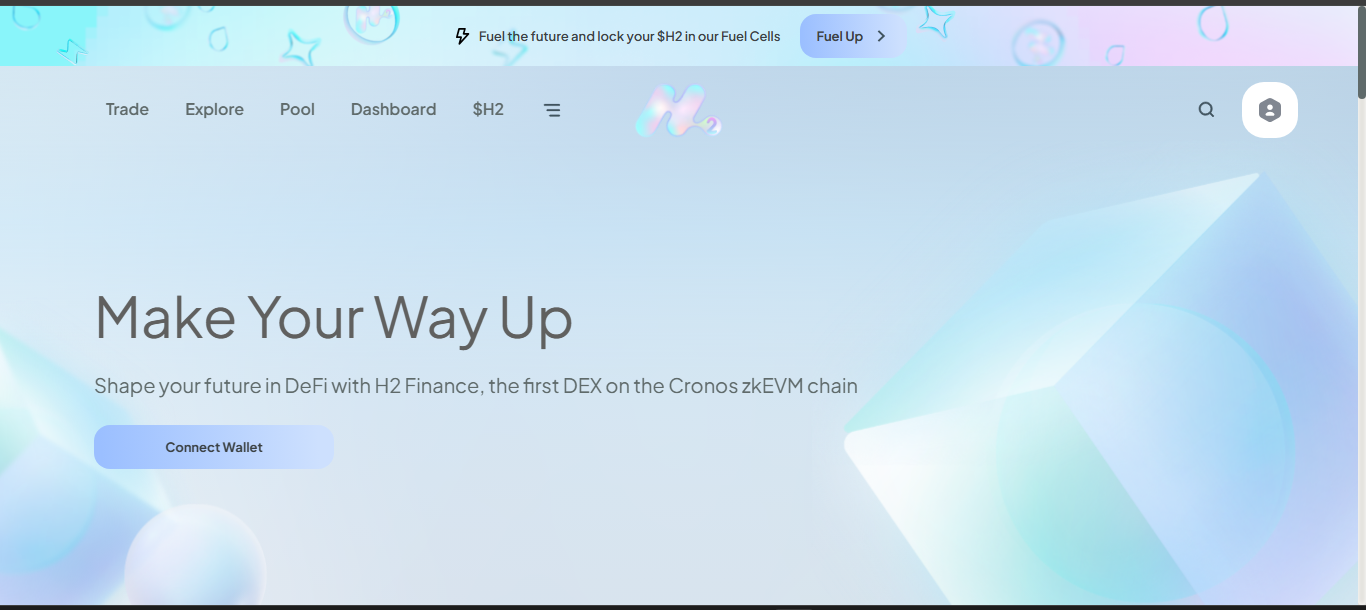H2 Finance Review – a promising DeFi blueprint with little life in it

H2 Finance is pitched as a cutting-edge decentralized exchange running on Cronos zkEVM, promising a mix of zero trading fees, wallet-native access, and unique farming incentives. It’s designed to sound like a complete DeFi toolkit - from instant swaps to liquidity pools and token farming, all while keeping things light on gas costs. In theory, that’s a smart approach. In practice? It’s hard to find more than a trickle of real users, and trust remains a huge gap.
The first look: modern on the outside, ghost town inside
Visit H2 Finance and it does make a strong first impression. The site feels fresh. You’ll see a neat dashboard inviting you to connect your wallet, view your tokens, explore farming options, or simply run a swap. There’s a section for tracking BBQ farming rewards and a spot to jump between supported chains.
But the good impressions start fading once you look for actual trades. Most pools barely hold any liquidity, many pairs show little to no trade history, and yield vaults seem frozen in place. It’s like standing in a new shopping mall where most stores are still closed.
What H2 Finance promises on paper
In plain terms, this platform tries to combine a few attractive ideas:
- Zero fees on swaps, so you’re not getting clipped on every move.
- Wallet-only usage, which means there’s no registration, no personal info, no KYC roadblocks.
- Farming with BBQ tokens, aimed at rewarding early liquidity providers and curious DeFi tinkerers.
- Support for multiple chains, all under the Cronos zkEVM umbrella, theoretically letting you shuttle assets around at low cost.
It all paints a picture of frictionless DeFi - hop in, swap around, maybe drop some tokens into a pool and pick up yield.
Where the problems start surfacing
This is where you have to get real about the risks and the actual experience. A few minutes exploring H2 Finance tells you most of the story.
- Liquidity is almost zero. Many pools have balances so small that even trying a modest swap means either blowing through all liquidity or triggering huge slippage. It’s common to see pools with less than a couple hundred dollars total.
- Volume is tiny. Most days, trade counts across the platform don’t even move the needle. No volume means no real price discovery, no chance to execute size, and no depth to handle volatility.
- Farming rewards look abandoned. While BBQ incentives exist on paper, there are few if any new deposits, suggesting farmers either already pulled out or never bothered to come.
- No visible security audits. This is a platform that handles user wallets, encourages liquidity pooling, and yet provides no public safety reports or smart contract audits.
- Silent or invisible community. You won’t find active governance proposals, big user threads, or vibrant Telegrams pushing updates. It feels like the team set up the framework and then stepped back, hoping users would fill the gap on their own.
Who might still want to poke at it
Despite those gaps, there’s a very slim crowd who might still find H2 Finance interesting. If you’re a DeFi hobbyist who enjoys trying new chains, or if you’re specifically a Cronos zkEVM follower looking for any fresh protocol to test, you could spin up a wallet and try a micro swap. Likewise, if you’re a developer who wants to experiment with contract calls or liquidity provision on a lesser-known platform, H2 Finance is cheap and quiet enough to do so without risk from crowds.
Who really shouldn’t touch it
Pretty much everyone else. If you’re managing even a mid-sized portfolio, or if you’re counting on liquidity to enter and exit positions without crazy spreads, H2 Finance is not close to ready. Investors who care about proven security measures, audits, or long-term roadmap confidence will find none of that here. There’s also no real ecosystem to support you if something goes wrong - stuck trades, failed withdrawals or bugged vault contracts could leave you with no help.
Clear snapshot of where it stands
It helps to boil it down into a quick scorecard:
Final thoughts: concept waiting for actual adoption
H2 Finance stands as an interesting case study. It showcases what a next-gen DEX might look like on a gas-light environment like Cronos zkEVM. Zero fees, instant wallet swaps, yield hooks - all are smart design choices. But none of it matters if nobody’s there.
For now, the most you should consider is playing with it like a sandbox. Drop in the smallest amount you’re willing to fully lose, test a swap, maybe try staking a tiny bit just to see how contracts run. Beyond that, keep serious money far away until liquidity shows up, audits get published, and a real user base takes shape.
DeFi thrives on trust - not just flashy dashboards or zero-fee slogans. Without proof that your funds are secure and that there are other people actively transacting, a platform like H2 Finance stays stuck as a ghost town. Interesting for a look, but not ready to be your next DeFi home.
Disclaimer
“This content is for informational purposes only and does not constitute financial advice. Please do your own research before investing.”
.png)







%203.svg)
%203.svg)




















